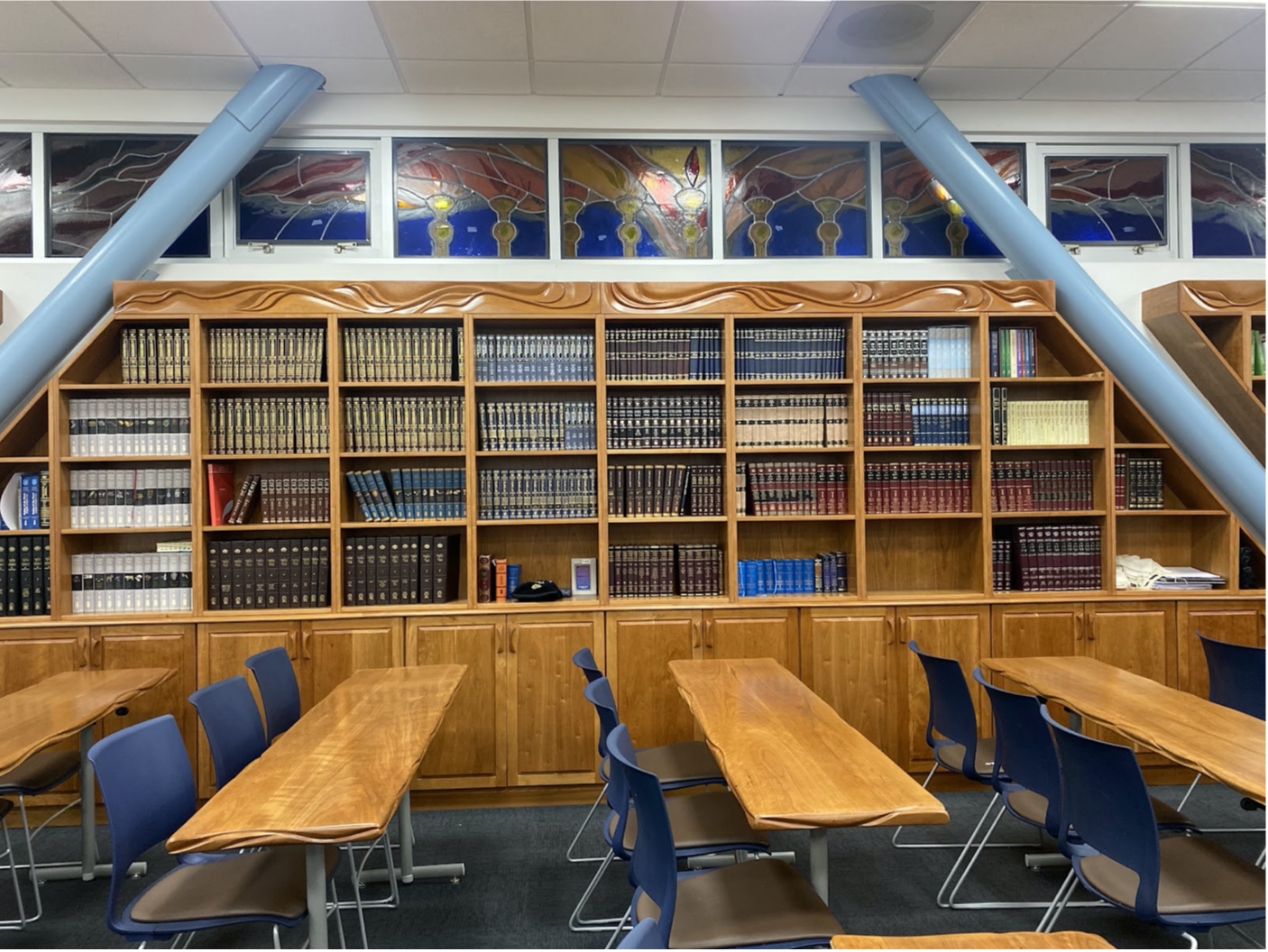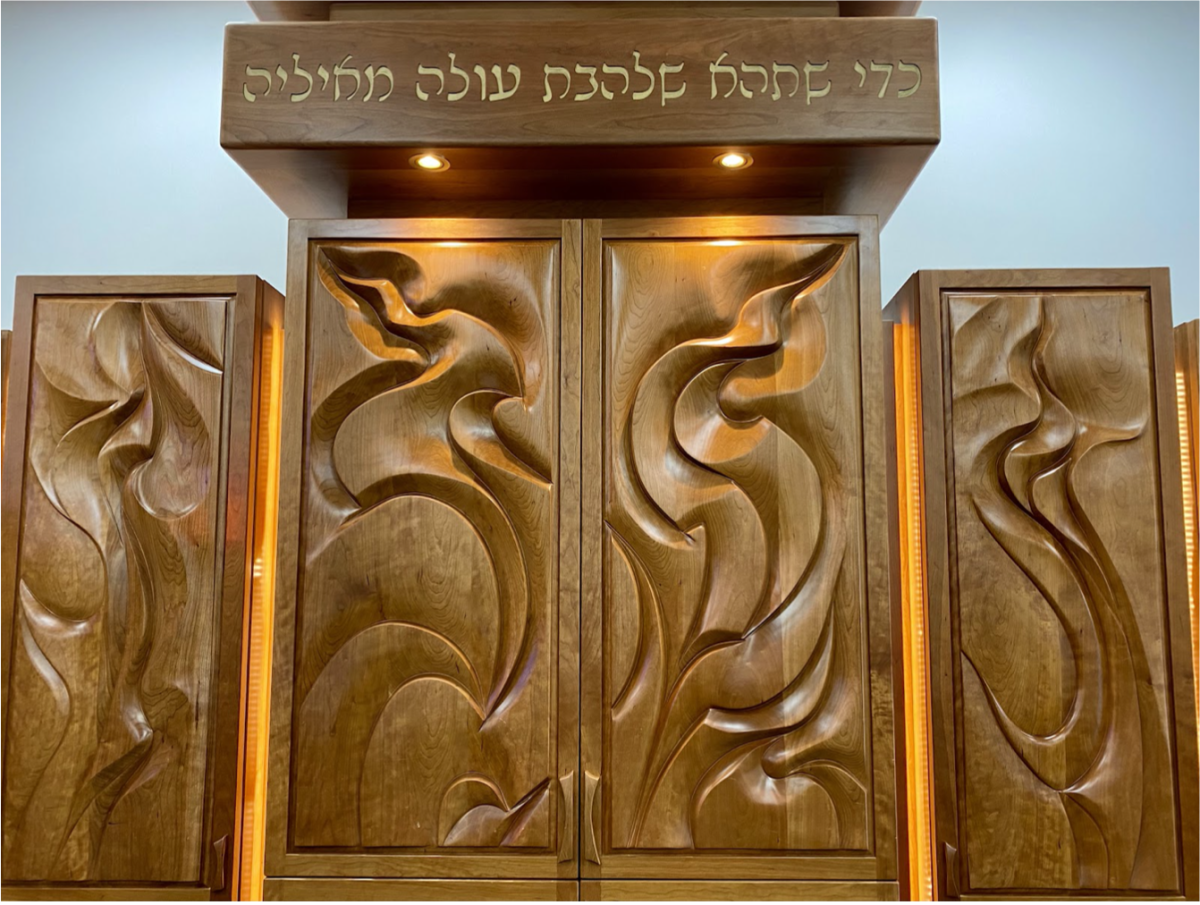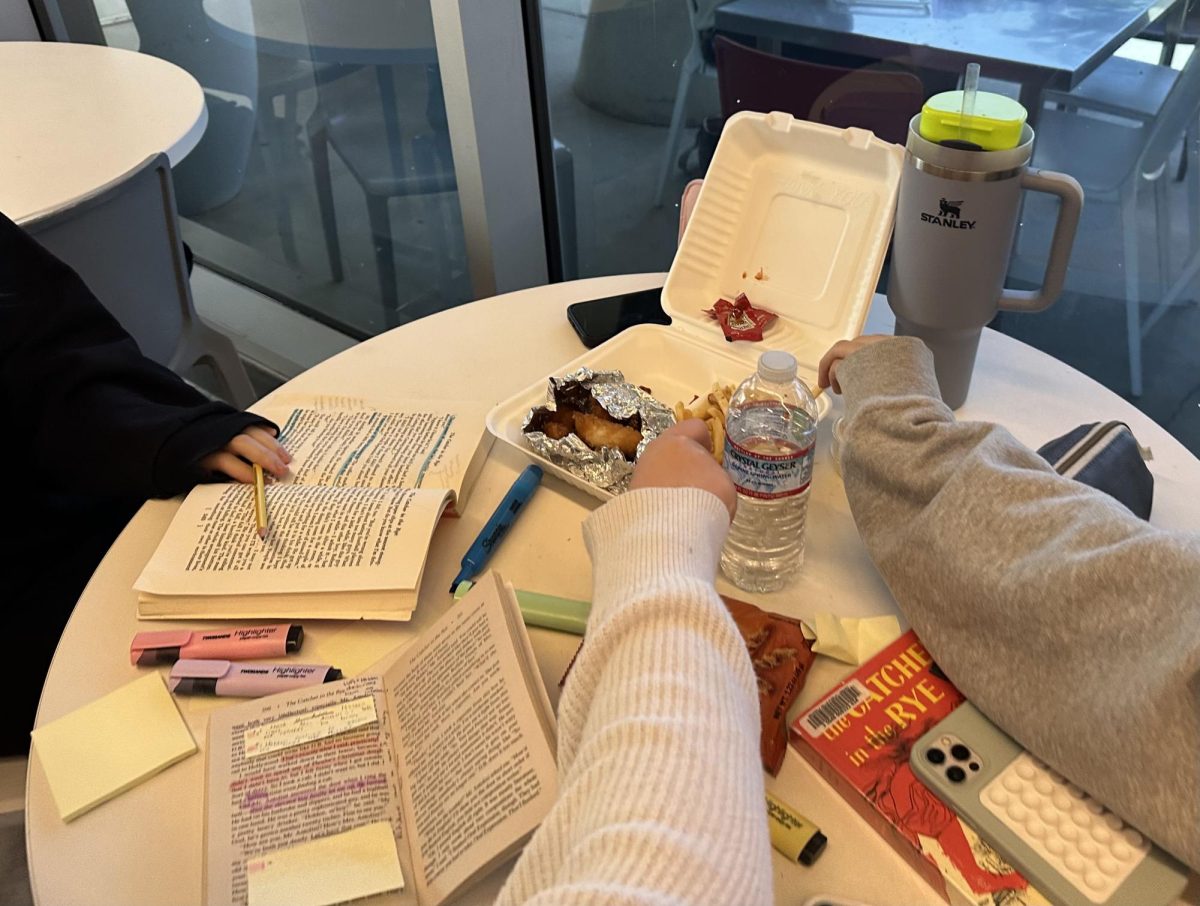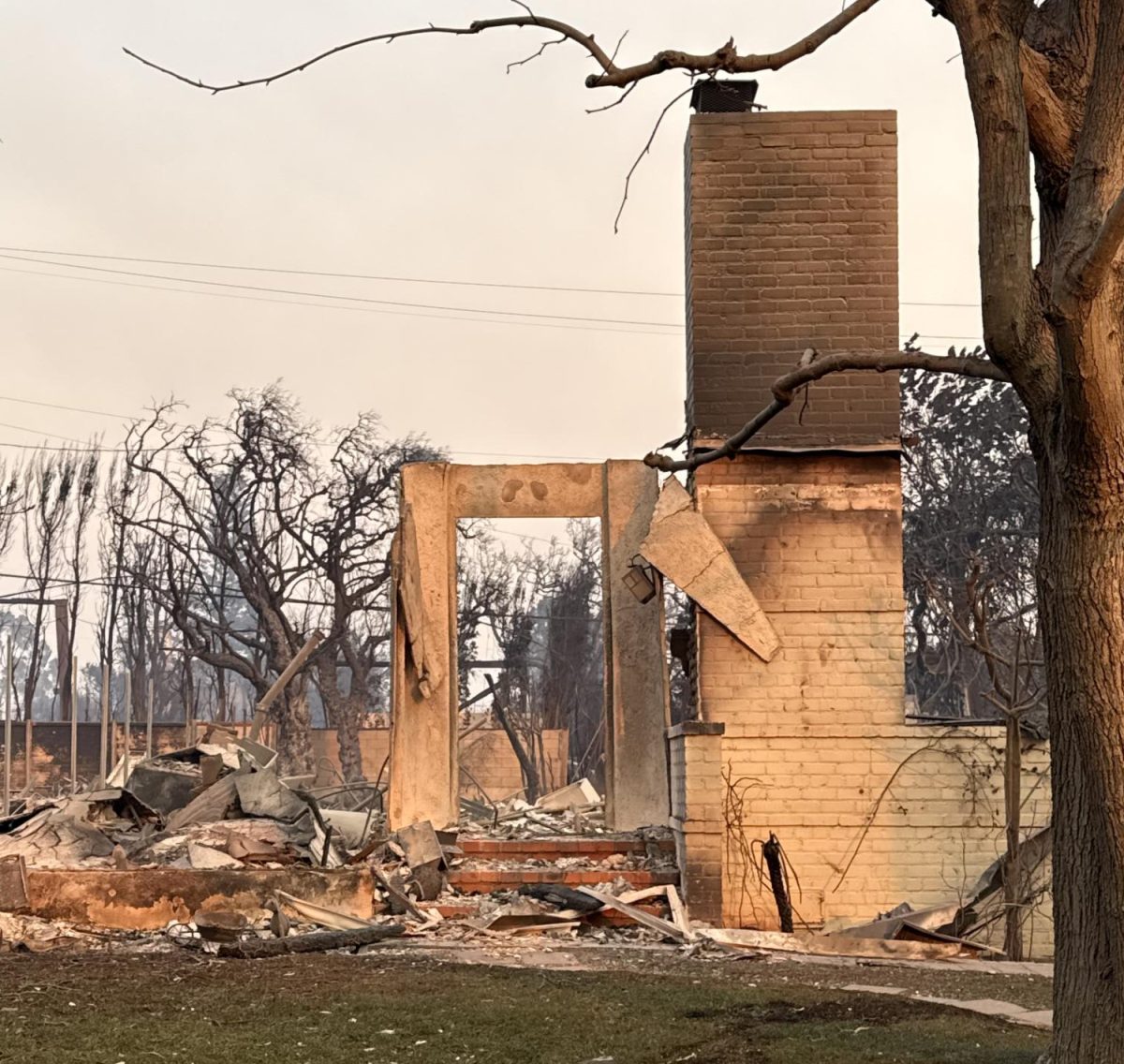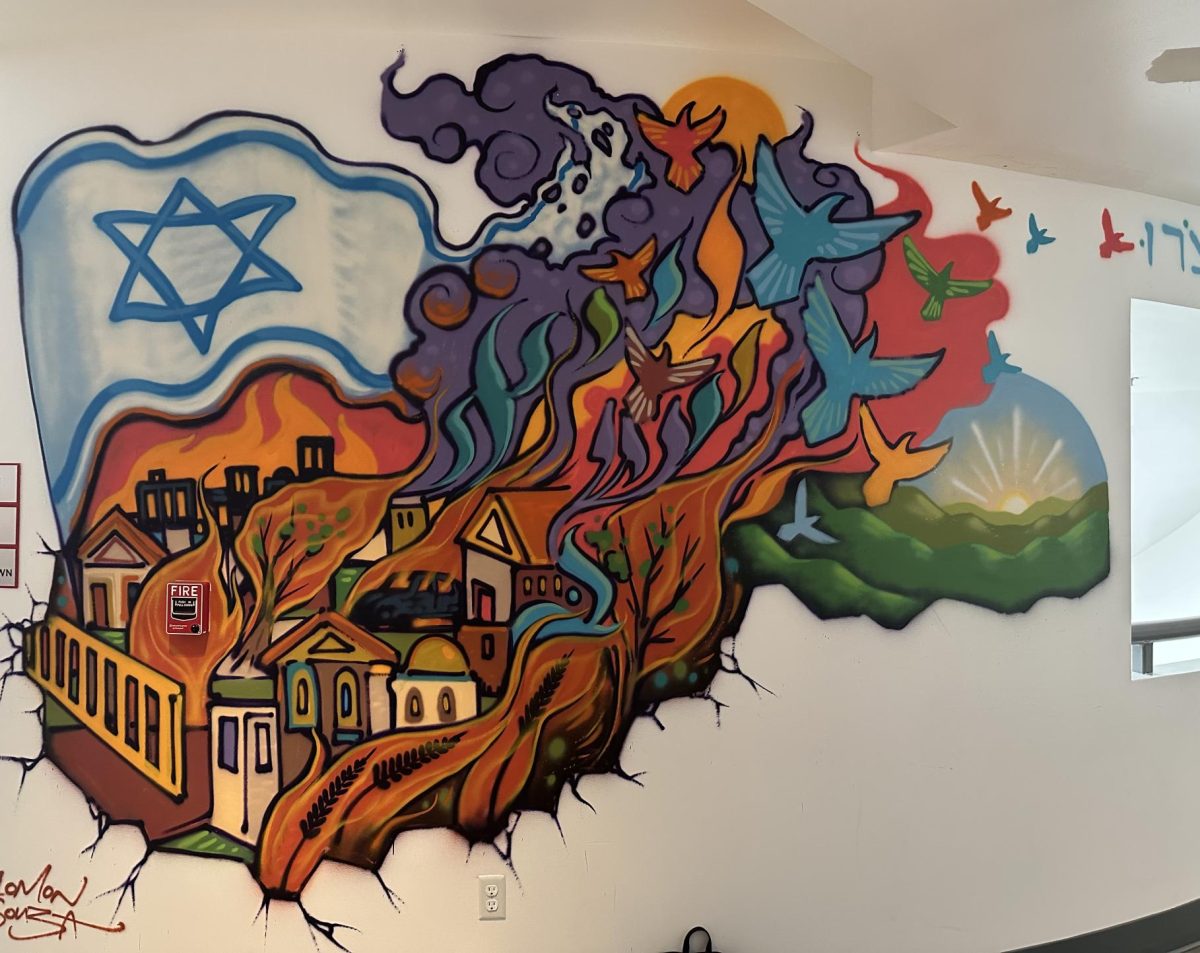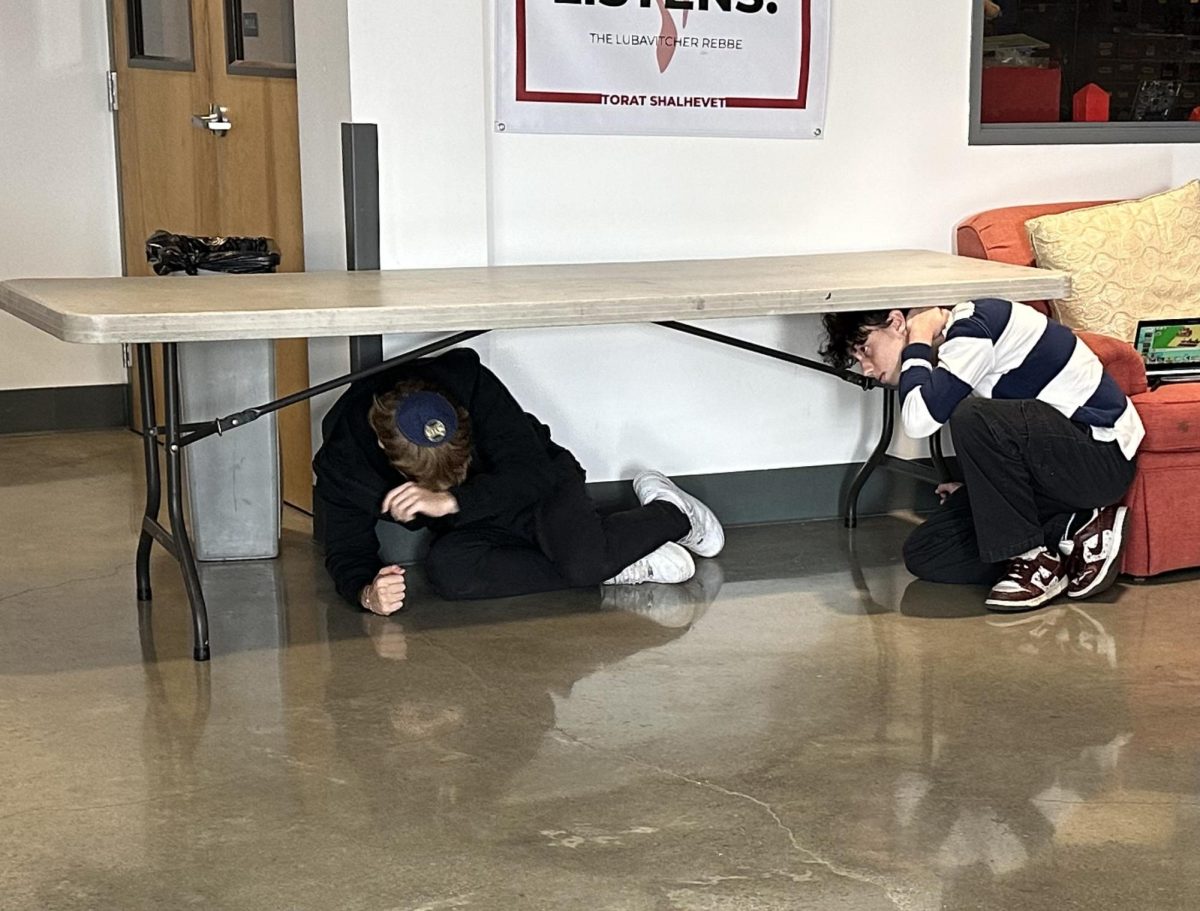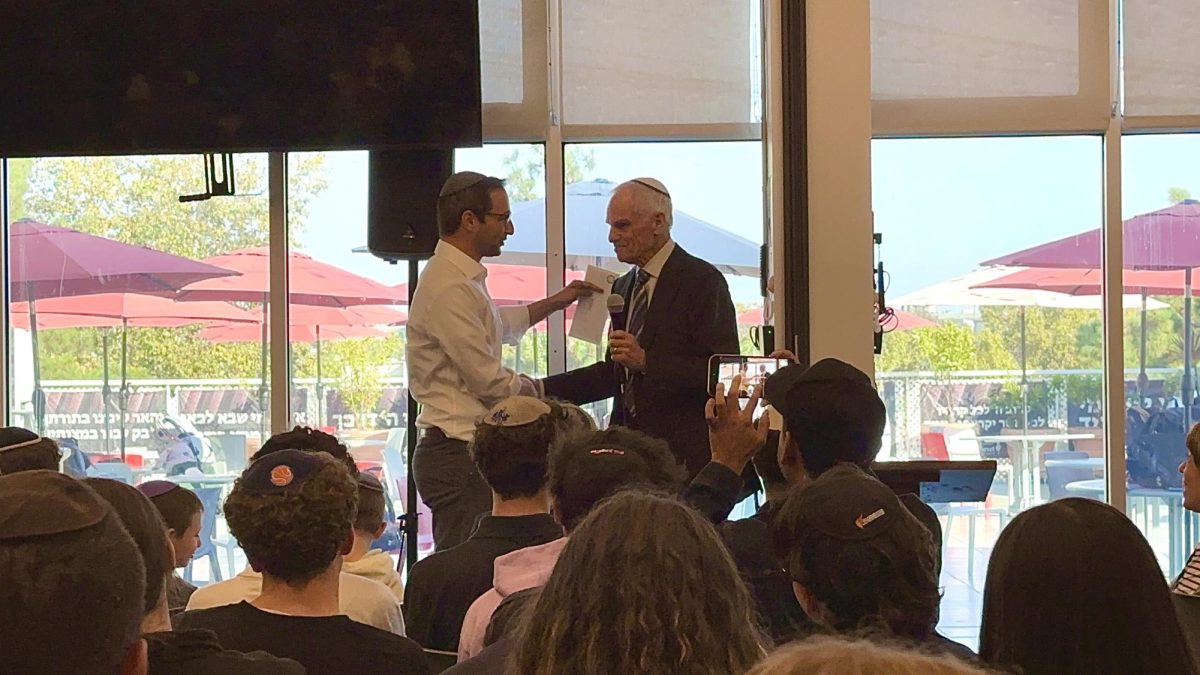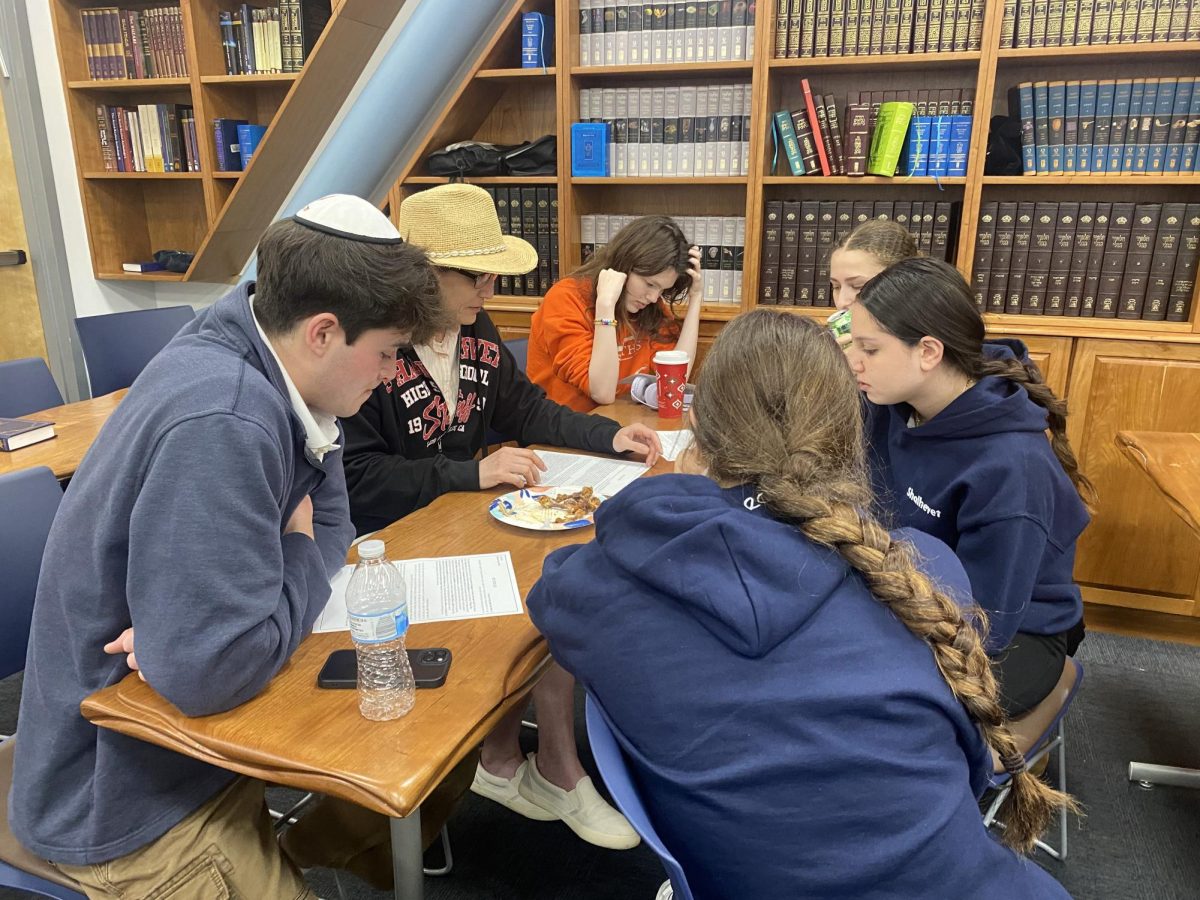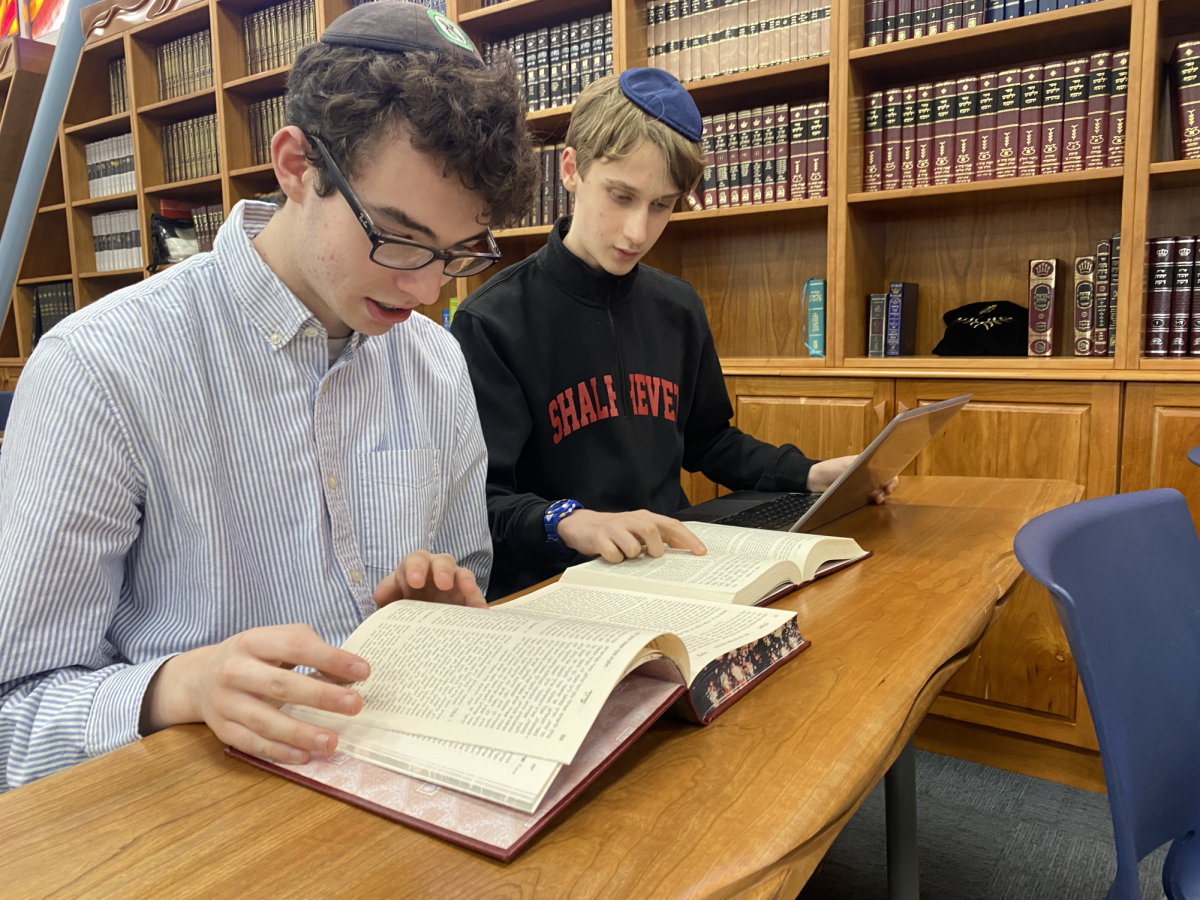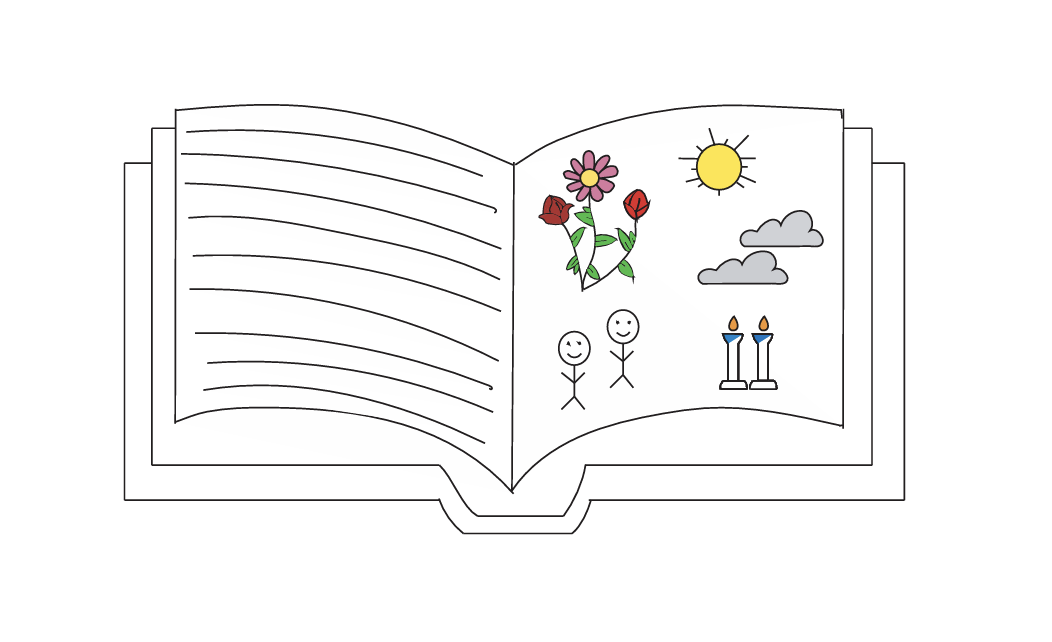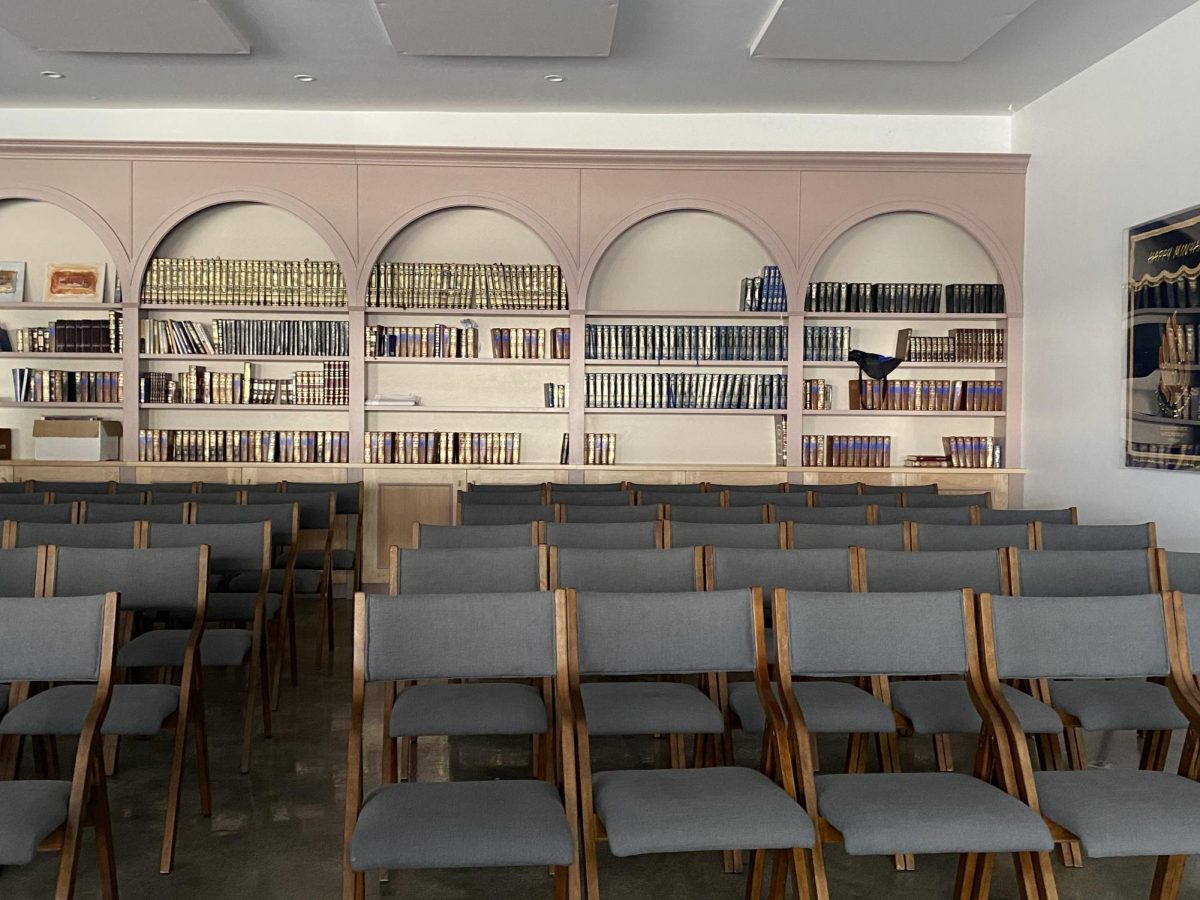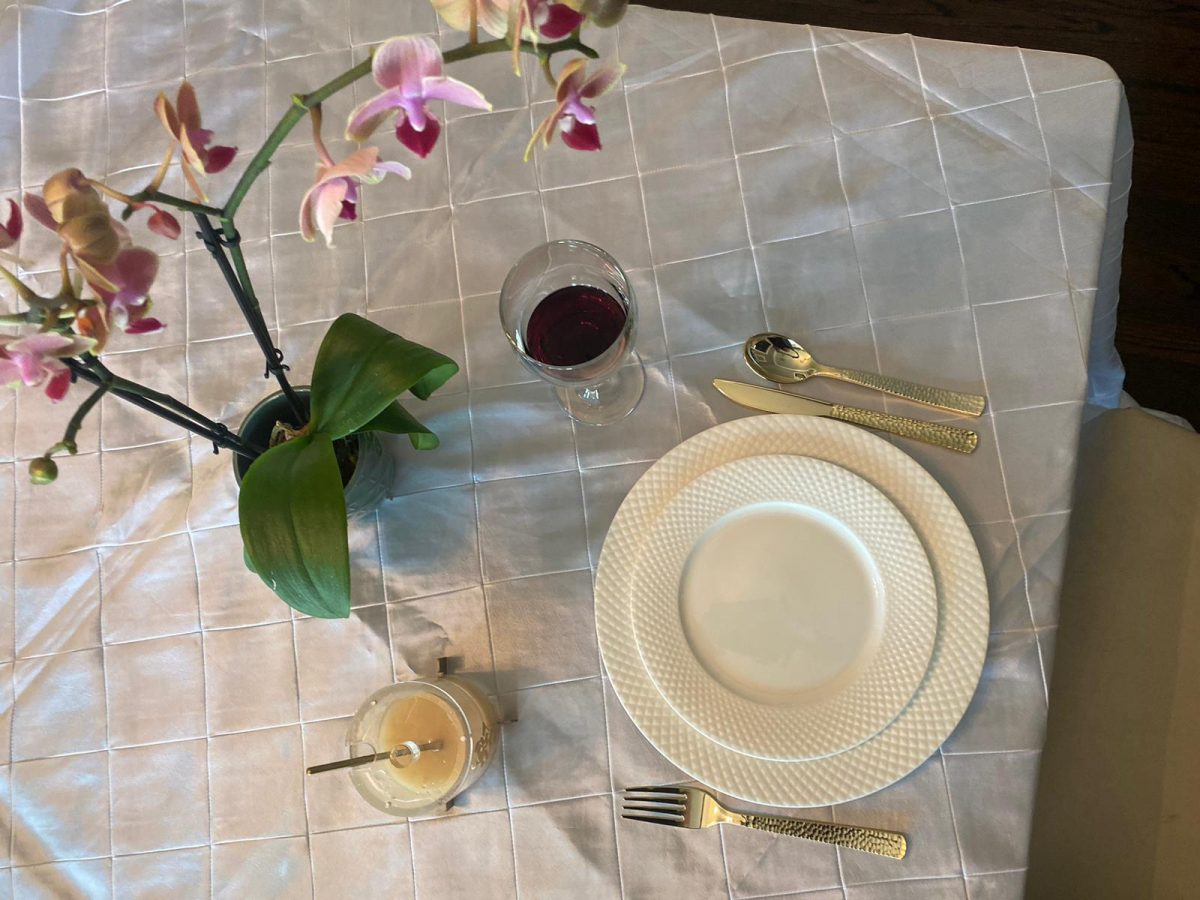At this time last year, Room 304 could easily have been mistaken for an all-purpose meeting room and classroom space. Now, after extensive renovations over the course of the past year, it is clear it is a Beit Midrash – a home for study – intended for davening and studying Torah.
Head of School Rabbi David Block said that this was in fact the goal of the project, which included the construction of new sacred architecture – a wooden aron kodesh, bimah, and mechitzot – as well as matching wooden shelves and tables, stained glass windows and doors, and a new full-wall timeline of the history of the Jewish people and texts.
“Any serious Jewish, certainly Orthodox, school should have a place that is for Torah, that is really conducive to it,” Rabbi Block said. “We’ve always tried to use 304 as a place restricted to Judaic studies… but now that’s really true. We’re using the Beit Midrash purely for tefillah” – prayer – “and Judaic studies.”
Today, the Beit Midrash’s fixtures are carved in a free-flowing style of honey-toned wood, matching its theme of fire. The aesthetic is derived from the meaning of Shalhevet, which translates to flame.
Above the bimah are carved the words kedei sheteheh ohr shalhevet olah me’aleyha – so that the light of the flame will ascend of itself – which is found in Gemara Shabbat, on both pages 20a and 21a.
The redesign took about five months from first discussions with artists to its current state. Rabbi Block said that they decided not to do any real construction projects – leaving the walls and carpet, for example, as they were, to minimize costs. According to Chief Operating Officer Ms. Sarah Emerson, it was paid for by a grant from the Legacy Heritage Fund, and that the amount of the grant was private.
Israeli artist and woodworker Mr. Jeremy Kimchi designed and carved the bimah, mechitzah, shelving and tables. Born in the U.S., he emigrated to Israel after high school and now carves wood for homes, synagogues, hotels and other buildings in both countries.
Continuing the fire theme, stained-glass artwork on the doors of the Beit Midrash depicts a burning bush, and is inscribed with a pasuk (verse) describing the episode of Moshe and the sneh habo’er – the bush that burned without being consumed.
On the other side of the room near the ceiling, stained glass windows above the bookshelves depict a menorah, interwoven with more pesukim from the Torah referring to fire.
The stained glass was created by Mr. Barak Uranovsky, an Israeli artist specializing in glass who flew in from Israel several times over the course of last year to work on the Shalhevet project.
Mr. Uranovsky also created a dramatic glass-and-calligraphy timeline which spans the room’s entire back wall, laying out the history of the Jewish people from Avraham all the way up to the founding of Shalhevet in 1993.
The timeline is intensely detailed, even to the font of the letters, which changes depending on the style used in each period of history – for example, Rashi script is used for the medieval period, when Rashi lived.
Stretching out underneath the timeline are strips of glass the colors of fire, spreading like a flame flecked with specks of charcoal across centuries of Jewish life.
In addition to creating a room solely for Torah purposes, Rabbi Block said another goal of the project was to simplify to beautify the Beit Midrash and make it a pleasant room to study and pray in.
“When I walk in, it’s a place that I want to be in,” Rabbi Block said.
Mr. Uranovsky felt similarly, while making sure that the beauty of his art wouldn’t distract from its greater purpose as part of a Beit Midrash.
“The idea of a Beit Midrash or any place like that is a place conducive for spirituality,” said Mr. Uranosky in an interview. “Any place that I’m doing needs to be a place that does its job… If I’m doing a Beit Midrash it has to be a place that makes you want to daven there, not sit and look at the windows!”
Rabbi Block said that it was important for school leaders – in particular, himself, Ms. Emerson, and Dr. Jonathan Ravenshenas, Dean of Admission and Student Life – to remain fully involved in the process.
“It wasn’t just something we outsourced,” Rabbi Block said.
Sometimes this included a long back and forth with the artist. In the case of the timeline on the back wall, Rabbi Block had wanted to include primarily positive events, whereas Mr. Uranovsky wanted both negative and positive events.
“We should put whatever was, and that’s it,” the artist said.
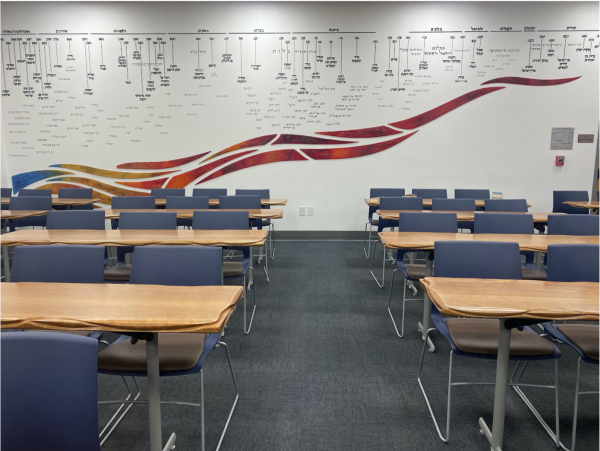
Eventually, Rabbi Block’s vision won out, and Mr. Uranovsky said he ended up being glad about it.
“It needs to be inspiring as well,” said Mr. Uranovsky of the mural.
Mr. Uranovsky said that he can already see how the timeline inspires viewers with a better understanding of their history.
“I hope to do this project again in other schools, because I just think that it’s so important for people to know their history,” he said. “It’s really really dangerous not to know your history.”
He added he himself was learning from it.
“I found myself getting things in order in my head,” said Mr. Uranovsky. “It seems to be influencing people, which is very cool… People who have been in yeshiva for a long time are saying, ‘Send me a picture!’”
Both Rabbi Block and Shalhevet students have described a distinctive aura of the room.
“I love the feeling of Israel in there also,” said Rabbi Block, referencing the woodworking designs popular in Israeli shuls.
Student reaction has been similar.
“I like it, I think it looks more modern, and I really like the new aron and the carving,” said sophomore Hannah Carr.
Senior Mordechai Heller enjoys the use of both “modern and classic elements.”
“How they’re able to intertwine both sides of that is pretty awesome,” said Mordechai. “I think people get a lot more locked in, the environment helps facilitate – you feel like you’re in the Beit Midrash.”
Junior Ariel Shapiro thought the art installations are “really beautiful.”
“I think it’s awesome that Shalhevet is investing in itself,” Ariel said, “and improving itself and making the Beit Midrash more beautiful because in the end that’s the most important thing it can do.
“I think if you have a nicer, cleaner and more organized room, I think it’s just easier to learn.”


